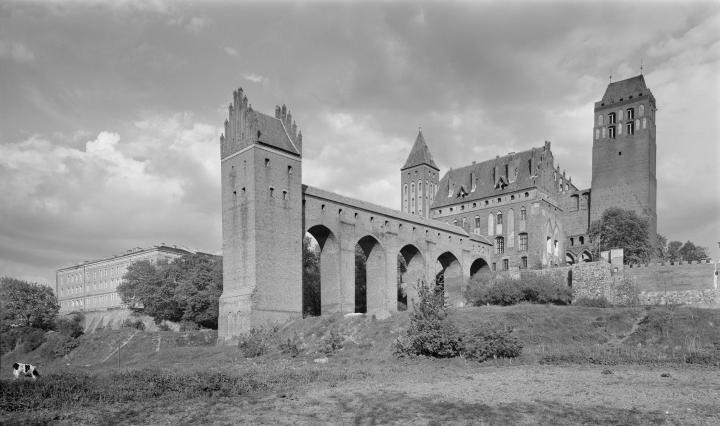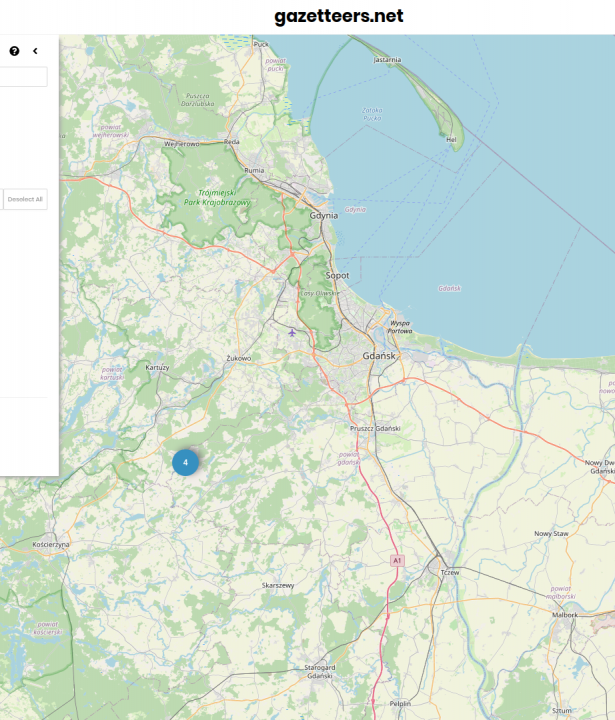The portal is an interactive art-historical research infrastructure with a specific focus on the – until now insufficiently acknowledged – achievements of art production in East Central Europe, and presents their complex interrelationships online with the application of digital methods and concepts.
Text
The documentation data and image holdings open up a canon of outstanding architectural and artistic works from East Central Europe. In the portal these are brought together transnationally and made available with the aim of showing not only the manifold interconnections of art development in East Central Europe in the period 1000-1800, but also the competing knowledge-historical references. The comparative view allows, in a virtual environment, a vivid presentation and rediscovery of aspects of the history of style and tradition, of cultural transfer, of commissioning practices, as well as of the formation of networks of artists and builders.
The data model is based on the one hand on the CIDOC Conceptual Reference Model, an application ontology specifically tailored to the cultural heritage sector, and on the other hand on the so-called Functional Requirements for Bibliographic Records. The latter are suitable for the in-depth scientific indexing of photographic collections, whereby the photographs themselves are also indexed as regular collection objects. Prototypically, multilingual norm data is integrated and the most important terms are mapped to Eastern European languages. As a result, FoKO offers a powerful research infrastructure for art history as a supraregional, transnational digital working environment with a networked organizational form.


Marienwerder/Kwidzyn Castle in the year 1987 (Poland); Herder Institute for Historical Research on East Central Europe, Image Archive, inv. no. 303211. Stefan Arczyński / CC BY-NC-SA 4.0
Marienwerder/Kwidzyn Castle in the year 1987 (Poland); Herder Institute for Historical Research on East Central Europe, Image Archive, inv. no. 303211. Stefan Arczyński / CC BY-NC-SA 4.0
Text
The photographs made accessible via the portal have a high scientific and technical quality and document the diverse monument landscape in the countries of East Central Europe. They create a special awareness of the region's most important cultural heritage monuments, including buildings that can be newly discovered as cultural testimonies. All photographs are available in the maximum resolution of the camera model used in each case. Specific phototechnical details have been taken into account in order to faithfully reproduce the respective monuments. With the possibilities of motif design, cropping, format and depth of field, as well as digital image processing, the photographs convey a precise impression of the photographed object that is as neutral as possible. In addition to current photographs, historical photographs from various institutions are also included in order to document how cultural-historical monuments have changed over the course of history.
The technical basis for both the indexing and the virtual research environment itself is the "Scientific Communication Infrastructure (WissKI)". WissKI enables the development of applications in the field of Digital Humanities using current standards and is a modular extension of the content management system (CMS) and web development framework Drupal. Data acquisition and data storage in WissKI are based on the development of semantic relationships using current semantic web technologies. The classification and storage of the collected data is based on the ISO standard 21127 (CIDOC-CRM). On this basis, data that appears to be solitary is linked to form a common semantic network, thus allowing further and more profound connections to be seen.


The mural "Charles IV and Anne of Schweidnitz venerate the Bohemian Relic Cross“, Karlstein Castle/Hrad Karlštejn (Czech Republic). Radovan Boček / Leibniz-Institut für Geschichte und Kultur des östlichen Europa (GWZO) an der Universität Leipzig, Free access - no reuse
The mural "Charles IV and Anne of Schweidnitz venerate the Bohemian Relic Cross“, Karlstein Castle/Hrad Karlštejn (Czech Republic). Radovan Boček / Leibniz-Institut für Geschichte und Kultur des östlichen Europa (GWZO) an der Universität Leipzig, Free access - no reuse
Text
The objects can be found using a full text search as well as via facet filters. The latter allow users to search the datasets by countries, material terms, epochs/styles, genres or via subject classification. The metadata is also available for download, with the JSON-LD SPARQL endpoint serving as the interface.
Unless otherwise noted, the digital content, image materials, and derivatives have been made available under the CC BY SA 3.0. DE license on the project portal and on the partners' own websites. The metadata for the image materials is available under the CCO 1.0. Universal license.
Externe Links
External Image





